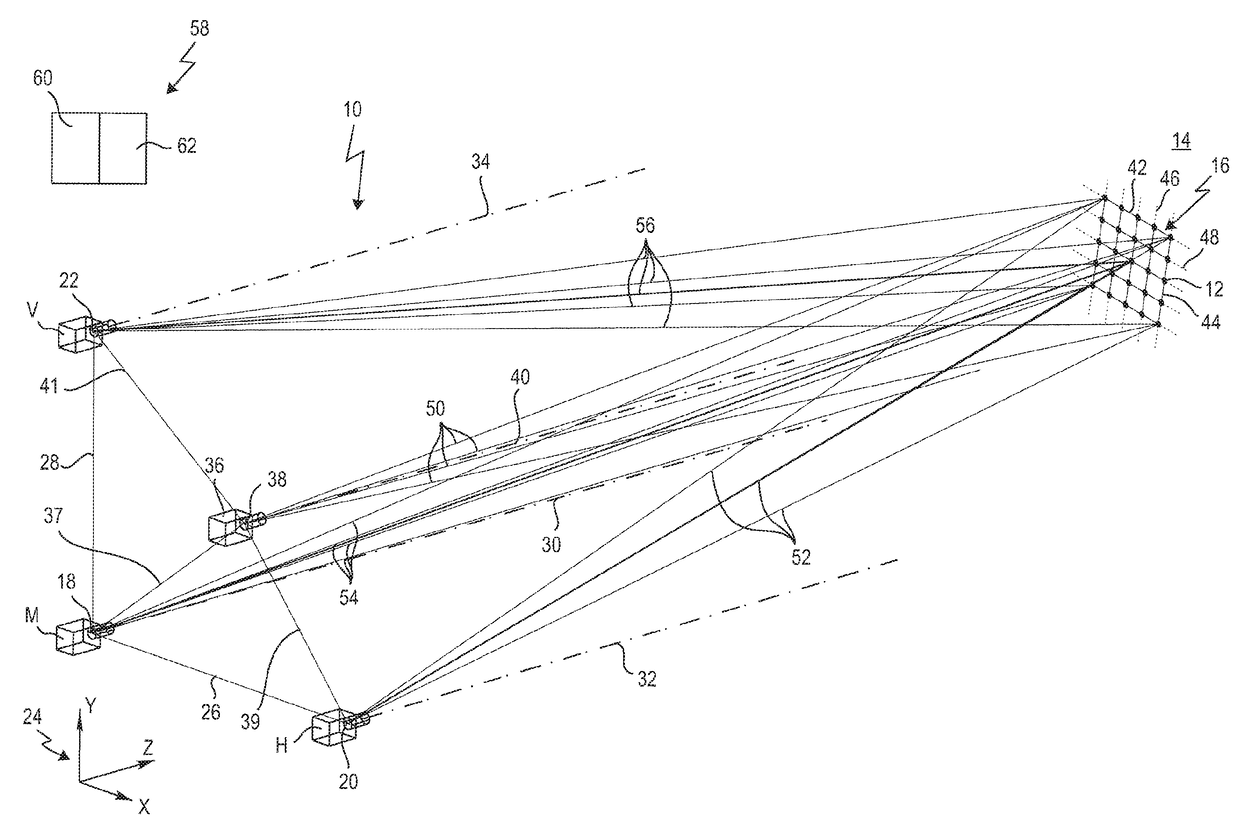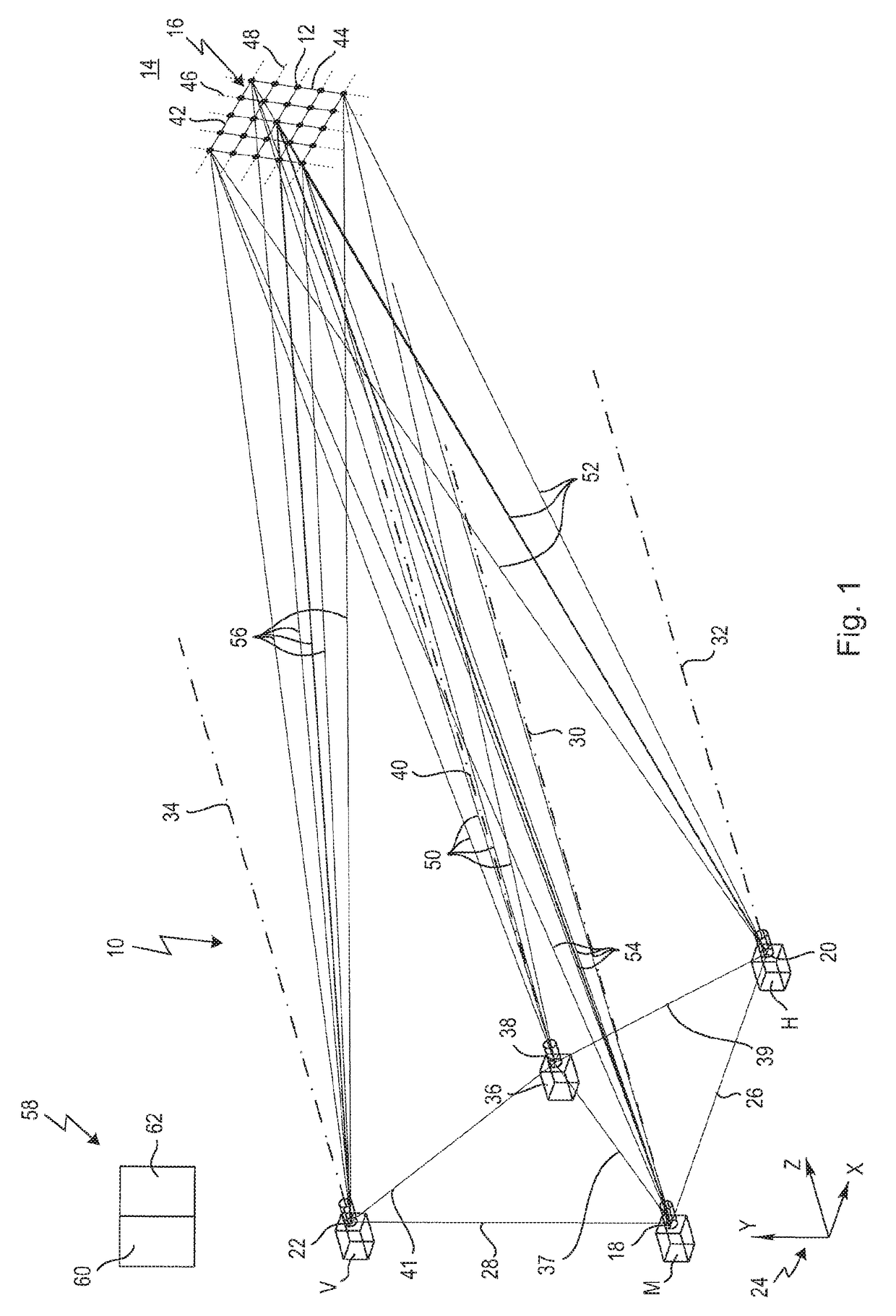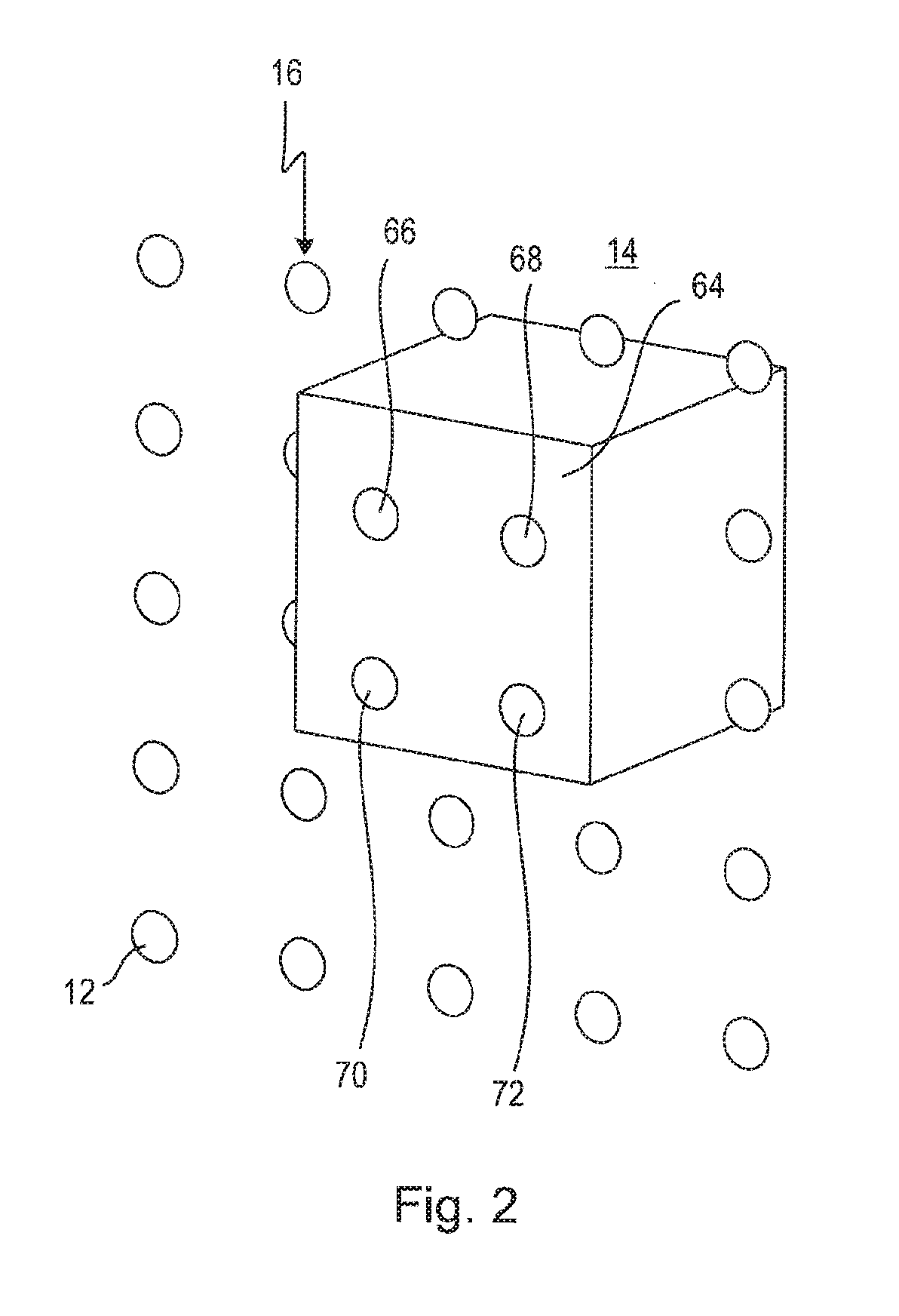Method and apparatus for identifying structural elements of a projected structural pattern in camera images
a technology of projected structural patterns and methods, applied in the field of method and apparatus for identifying structural elements of projected structural patterns in camera images, can solve problems such as dangerous situations, erroneous determination of distance from an object within the scene, and measurement errors, and achieve the effects of facilitating specialization, simplifying geometric ratios, and advantageously further advantageous storage capacity and computational power
- Summary
- Abstract
- Description
- Claims
- Application Information
AI Technical Summary
Benefits of technology
Problems solved by technology
Method used
Image
Examples
Embodiment Construction
[0086]FIG. 1 shows an apparatus, which is designated with the general reference sign 10, for identifying structural elements 12 of a structural pattern 16, which is projected onto a scene 14, in camera images.
[0087]The apparatus 10 is used in particular for monitoring, in particular securing, a danger zone, in particular a danger zone of a machine (not illustrated). The scene 14 is in this case for example a three-dimensional spatial region, in which a machine, in particular a machine operating in automated fashion, such as for example a press or a robot (not illustrated), is located. Generally, moving objects, such as people, can be present in the scene 14, wherein the apparatus 10 monitors the scene 14 as to whether an object is located entirely or partially in, or approaches, the danger zone of the machine that operates in automated fashion.
[0088]The apparatus 10 has a first camera M, a second camera H and optionally, while preferred, a third camera V. The cameras M, H, and V are...
PUM
 Login to View More
Login to View More Abstract
Description
Claims
Application Information
 Login to View More
Login to View More - R&D
- Intellectual Property
- Life Sciences
- Materials
- Tech Scout
- Unparalleled Data Quality
- Higher Quality Content
- 60% Fewer Hallucinations
Browse by: Latest US Patents, China's latest patents, Technical Efficacy Thesaurus, Application Domain, Technology Topic, Popular Technical Reports.
© 2025 PatSnap. All rights reserved.Legal|Privacy policy|Modern Slavery Act Transparency Statement|Sitemap|About US| Contact US: help@patsnap.com



